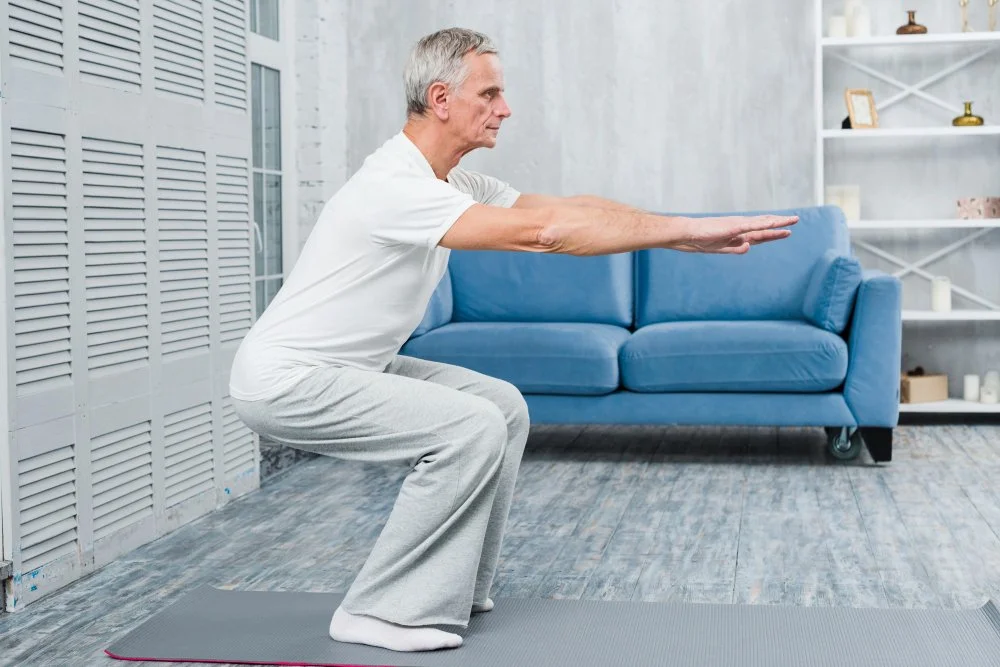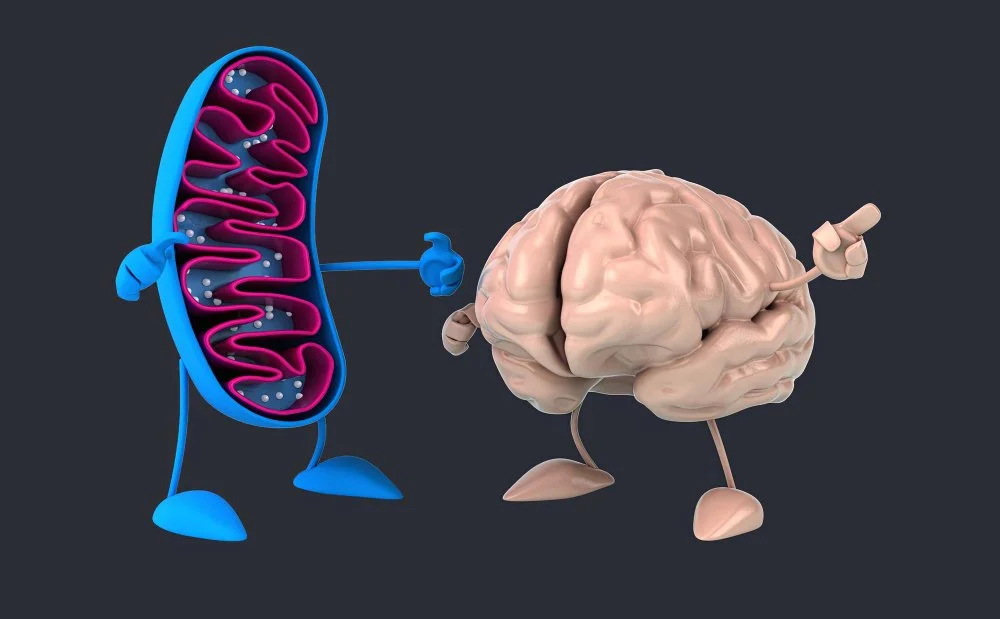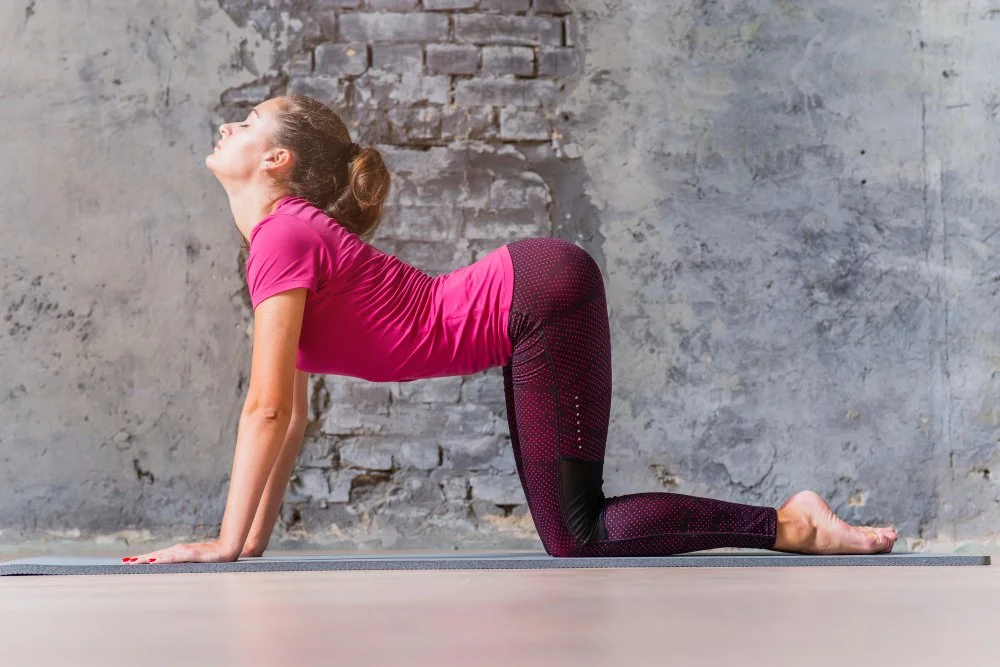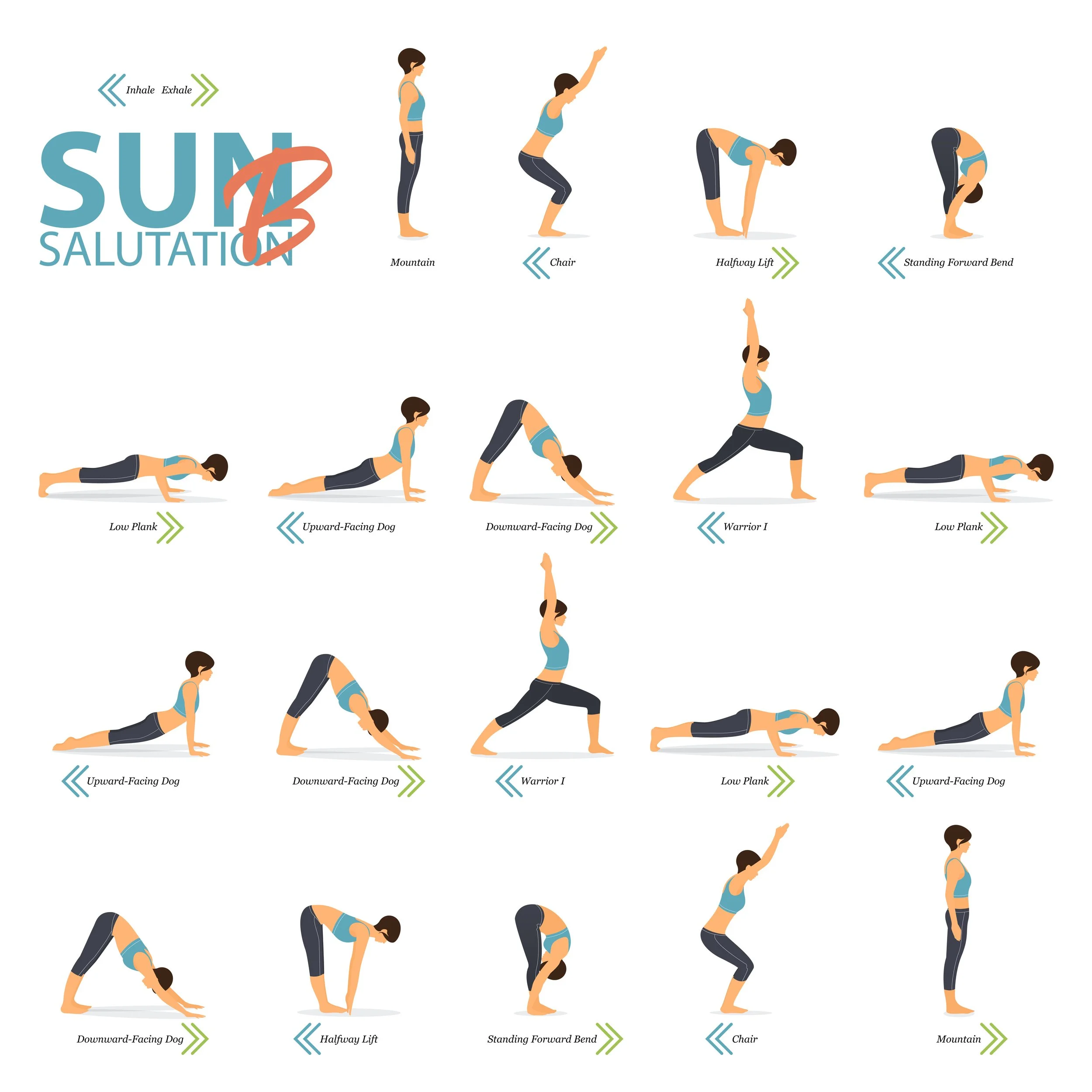Small Moves, Big Impact: Exercise Snacking to Boost Longevity and Healthspan
I’ve spent countless hours in the gym lifting weights and on the treadmill logging miles because I’d been taught that exercise has to be done in hour-long sessions to “count.” But what if one of the secrets to lifelong vitality isn’t found in long workouts, gym memberships, or perfect discipline — but in short, intentional bursts of movement sprinkled throughout your day? Research — and real life — are showing us something different. Health and longevity are built not in the gym, but in the small moments: a flight of stairs instead of an elevator, a stretch between tasks, a few squats while dinner simmers. These are exercise snacks — brief, purposeful bouts of movement that nourish your body and brain one small step at a time.
This shift in thinking is more than a trend. It’s a mindset that supports metabolic health, mobility, and mental clarity — three pillars of healthy aging and extended healthspan.
What Is Exercise Snacking?
Exercise snacking means moving in short bursts — anywhere from 1 to 10 minutes — several times throughout the day. Each “snack” might raise your heart rate slightly, challenge your muscles, or simply remind your body that it was made to move.
These micro-sessions add up. They improve blood flow, keep joints lubricated, and re-ignite metabolism that tends to slow during long sitting periods. You don’t need a gym, special shoes, or extra time — just intention and consistency.
Think of exercise snacking as nourishment: instead of starving your body for movement all day and then binging on an intense workout, you’re grazing on small, energizing servings of motion that your body can easily digest and use.
The Science Behind Exercise Snacking
In recent years, researchers have discovered that short, frequent bouts of movement can be just as effective — sometimes even more so — than one long workout session.
Studies show that even two or three minutes of stair climbing or brisk walking can significantly improve cardiovascular fitness and insulin sensitivity when done consistently. Another found that people who accumulated small bursts of moderate-to-vigorous activity (VILPA or vigorous intermittent lifestyle physical activity) throughout the day had a lower risk of early death than those who remained sedentary between longer workouts.
Here’s why it works:
Metabolic activation: Each burst of movement stimulates glucose uptake by muscles, improving blood sugar control and reducing inflammation.
Mitochondrial health: Frequent movement keeps your cellular “powerhouses” active and efficient, slowing age-related decline.
Circulation and oxygenation: Regular bursts increase blood flow and oxygen delivery to tissues — including the brain — promoting focus and vitality.
It’s a simple but profound truth: the body doesn’t need hours of movement all at once. It needs regular reminders to stay alive and engaged.
How Exercise Snacking Supports Longevity and Healthspan
Longevity isn’t just about extending years — it’s about expanding vitality. Exercise snacking helps you do both. These small but consistent moments of movement nourish your body’s systems from the inside out, creating a steady rhythm of renewal that supports strength, energy, and mental sharpness at every age.
Over time, our muscles naturally lose some tone, balance becomes less automatic, and metabolism slows. But the story doesn’t have to end there. The body is remarkably adaptive — it responds to signals. Every time you move, even briefly, you send a message to your cells to stay active, alert, and ready for life. Exercise snacking delivers those signals all day long.
Keeping Muscles Engaged and Metabolism Active
Movement is one of the most powerful ways to influence how your metabolism behaves. Think of your muscles as your metabolic “engine.” When you sit for long stretches, that engine idles. But when you move — even for 30 to 60 seconds — you turn the key, waking it up.
Those short bursts increase the demand for energy, prompting your cells to burn glucose and fat more efficiently. Over time, this helps stabilize blood sugar and reduce insulin spikes — both key for maintaining a steady metabolism and preventing the slow drift toward metabolic syndrome that can undermine long-term health.
Each mini movement also boosts mitochondrial activity — those tiny power plants in your cells that convert food into energy. Frequent, gentle activation keeps them plentiful and resilient, supporting the stamina and vitality we associate with youth.
This pattern of micro-activation has another benefit: it prevents the “post-meal slump.” When we sit still after eating, blood sugar tends to rise higher and stay there longer. A quick two-minute walk, a few squats, or a stretch break after meals helps smooth that curve, teaching the body to handle nutrients gracefully.
In essence, exercise snacking keeps your metabolism responsive — not sluggish. It’s a way to stay metabolically youthful even as you age, using the power of small, intentional movement to stay balanced and energized.
Energizing Your Cells: Supporting Mitochondrial Health
At the most basic level, every bit of movement you do nourishes your cells — especially the mitochondria, the tiny “powerhouses” that generate energy for everything your body does. These microscopic engines thrive on use. When you move regularly, you stimulate your body to produce more mitochondria and to keep them working efficiently.
Frequent, brief bursts of movement — like an exercise snack — act as a gentle wake-up call for your cells. They encourage mitochondria to burn fuel cleanly, supply steady energy, and even repair themselves more effectively. Over time, this means less fatigue, better endurance, and a metabolism that feels vibrant and responsive.
When your cells are energized, your mind feels sharper and more alert — one more reason these tiny movement breaks can make such a big difference in how you feel throughout the day.
Feeding the Brain, Lifting the Mood
The connection between movement and mental well-being is one of the most remarkable — and one that is often overlooked. Every burst of activity sends oxygen and nutrients rushing to the brain, stimulating the release of neurotransmitters like dopamine, serotonin, and norepinephrine. These are the “feel-good” messengers that improve mood, sharpen focus, and fuel motivation.
Unlike long workouts that might leave you drained, exercise snacks create a steady rhythm of uplift throughout the day. They interrupt the mental fog that often settles in after hours of sitting, offering small hits of clarity and energy. Over time, this builds not only better physical endurance but emotional stamina — the ability to stay balanced, focused, and engaged with life.
Even gentle balance or flexibility snacks — like standing on one foot while brushing your teeth, or reaching for the sky before sitting down — engage the body-brain connection. These subtle movements refine coordination, enhance proprioception (your sense of body position), and remind your nervous system that you are adaptable and alive.
Exercise Snacking for Cognitive Longevity
Beyond mood and motivation, movement profoundly shapes how the brain ages. Research shows regular bursts of physical activity stimulate the growth of new neural connections and increase levels of BDNF (brain-derived neurotrophic factor), a compound that supports memory, learning, and long-term brain health.
In simple terms, BDNF acts like fertilizer for your brain cells — helping them grow, connect, and communicate efficiently. This is one reason why people who stay active tend to have sharper thinking and slower cognitive decline as they age.
But physical movement is only part of the story. You can also “snack” on mental movement — short, intentional bursts of brain engagement that keep neural circuits flexible and resilient.
Weaving Cognitive Exercise Snacks Into Your Day
Each way takes only a few minutes but contributes to long-term brain health and mental agility:
Change your route — Take a new path when walking or driving to challenge spatial awareness.
Learn a few words in a new language — Even five minutes of vocabulary sparks new neural connections.
Do math in your head — Skip the calculator when figuring tips or totals.
Play a quick memory game — Apps, puzzles, or even recalling yesterday’s meals help train focus.
Balance and count — Stand on one leg while counting backward from 50 in threes.
Dance freestyle to one song — Combines physical and cognitive coordination.
Try a new recipe without written instructions — Encourages sequencing, recall, and creativity.
Pause to visualize your next task — A brief mental rehearsal improves follow-through and executive function.
Each of these brain snacks works like an internal workout — stimulating the same resilience and adaptability in your neural circuits that exercise snacks provide for your muscles and metabolism.
When combined, physical and mental “snacking” creates a full-spectrum approach to healthy aging. Your body stays strong, your metabolism stays balanced, and your mind stays curious and clear.
Incorporating Exercise Snacking Into Daily Life
Exercise snacking works best when it fits naturally into your day — and that’s where the idea of habit-stacking comes in. The term was popularized by S.J. Scott in his book Habit Stacking: 97 Small Life Changes That Take Five Minutes or Less. The idea is simple: attach a new small habit (such as a mini movement break) to something you already do regularly (like brewing your morning coffee). When you pair the new action with a familiar routine, it becomes easier and more automatic.
So in the spirit of habit-stacking: think of this list as a buffet of movement — pick one item from each category each day: something to lift your heart rate, something to challenge balance, and something to stretch and soften the body — and anchor it to a moment you already experience.
Beginner Snacks (Gentle, Accessible, and Mobility-Focused)
March in place for 1–2 minutes while waiting for coffee or tea.
Seated leg lifts during phone calls.
Shoulder rolls or arm circles between computer tasks.
Wall or counter push-ups.
Calf raises at the kitchen counter.
Standing side bends or gentle torso twists.
One or two flights of stairs at an easy pace.
Hip circles or ankle rolls.
Neck stretches and shoulder openers.
Seated spinal twist or hamstring stretch.
Reach overhead, stretch side to side, take a deep breath.
Balance snack: stand on one leg while brushing teeth.
Intermediate Snacks (Dynamic, Strengthening, Balance-Enhancing)
Ten to twenty bodyweight squats between tasks.
Step-ups on stairs or a low bench.
Brisk five-minute walk after meals.
Ten counter or stair push-ups or triceps dips on a sturdy chair.
Side-to-side steps or gentle jumping jacks for 30 seconds.
Resistance band rows or biceps curls.
Alternating lunges.
Plank holds (15–30 seconds).
Yoga chair pose or slow squat hold.
Balance snack: heel-to-toe walk along a hallway.
Mobility snack: cat-cow stretch on hands and knees.
Flexibility snack: forward fold with deep breathing.
Advanced Snacks (Power, Endurance, Dynamic Balance)
Stair sprints or hill climbs for 30–60 seconds.
Jump squats or jump rope intervals.
Burpees (5–10 reps).
Mountain climbers.
Dynamic plank variations (shoulder taps, side planks).
Resistance band squats or deadlifts.
Kettlebell swings or farmer’s carries.
Balance + strength: single-leg deadlifts.
Flexibility snack: short yoga flow (sun salutations).
Stability snack: stand on a cushion while folding laundry.
Mindful mobility: slow tai chi-style movements for 2–3 minutes.
Build Your Own Movement Menu
Start small: choose one physical snack and one brain snack daily. Mix and match based on energy, mood, or time of day. Over time, these tiny moments create a rhythm of vitality — keeping your body flexible, your mind focused, and your metabolism humming.
Realistic Expectations and Gentle Consistency: A Gateway to Longevity Habits
Exercise snacking isn’t about intensity or perfection — it’s about showing up for yourself in small, sustainable ways. Some days, movement will feel light and effortless; other days, it might be nothing more than a few deep breaths, shoulder rolls, or a short stretch between tasks. Both count. Every moment of movement, no matter how simple, reminds your body that it’s cared for and capable.
When you shift your mindset from I have to work out to I get to move, something profound changes. Movement stops being a chore and becomes a form of gratitude — a daily expression of vitality. You start to move not out of obligation, but because it feels good to inhabit your body fully.
As these moments of movement become woven into your day, they often spark a ripple effect. You might notice that you crave lighter, more nourishing foods, sleep more deeply, or feel a steady calm that carries through the afternoon. The body and mind thrive on gentle consistency — and movement is often the keystone habit that naturally supports others.
Exercise snacking can pair beautifully with other longevity practices like mindful eating, proper hydration, time in nature, and intentional breathing. Each “snack” of movement becomes a brief pause to reset and reconnect — a reminder that lasting wellness isn’t built through intensity, but through the steady rhythm of small, caring choices that nurture both your healthspan and your joy in living.
As these habits begin to take root, you may find that the boundary between “exercise” and “life” starts to blur. Movement becomes less of an event and more of a rhythm — a quiet thread that supports your energy, mood, and sense of purpose throughout the day.
That’s the beauty of exercise snacking: it meets you exactly where you are and grows with you. Over time, those small choices create remarkable change — not through force, but through care, awareness, and consistency.
In the bigger picture, this is what longevity really means — not chasing time, but cultivating quality. Each brief moment of movement strengthens the systems that sustain you: your muscles, your metabolism, your mind, and your sense of vitality. What begins as a few mindful minutes of motion becomes a way of living that keeps you strong, clear, and connected for years to come.
Exercise snacking isn’t just about adding movement to your day — it’s about adding life to your years.
The Power of Small Steps
Longevity isn’t built in hours; it’s built in moments. Every step, stretch, and mindful pause is a vote for your future self — the one who still moves with ease, thinks clearly, and feels alive.
Start small. Stand, stretch, walk, balance. Move your body, feed your brain, and let those small moments accumulate into something extraordinary.
Because real change doesn’t require an overhaul — it begins with a single, nourishing choice.
If you’re ready to bring more ease, balance, and intention into your wellness routine, I’d love to help you get started. Schedule a free, no-strings consultation to explore where you are, where you want to go, and how simple, sustainable shifts — like exercise snacking — can help you get there.
Sometimes, all it takes is a single conversation to spark lasting change.
Let’s get cooking!
Cooking gives you countless natural pauses — moments that are perfect for gentle movement. You can turn these ordinary movements into your own mindful flow: rise onto your toes to grab ingredients from a shelf, engage your core while chopping, or take a few deep squats when you load the oven. These small bursts of motion keep your energy flowing and your posture open, turning time in the kitchen into an easy movement break for your muscles and mind.
Blackened Cod Filet with Butternut Squash Risotto
Blackened Cod Filet with Butternut Squash Risotto is a flavorful and comforting dish that combines the mild, delicate flavor of the blackened cod with the creaminess of risotto highlighted by the sweetness of butternut squash and the earthiness of the golden turmeric. The dish is made by sautéing onions, garlic, and turmeric, then adding Arborio rice and cooking it slowly with broth and white wine. The butternut squash is roasted until tender and then mashed and stirred into the risotto along with bits of fresh sage. Finally it is topped with crispy blackened cod. The result is a creamy, spicy risotto that is perfect for a cozy dinner or a special occasion.
Butternut squash in not only full of flavor but also packs a powerful punch of nutrients making it a delicious and heart-healthy addition to any meal. There are many reasons why you should make it a regular part of your meals as it is a delicious vegetable packed with nutrients. Paired with the earthy taste inflammation fighting effects of turmeric, it is a one-two health punch that helps keep your body healthy.

Blackened Cod Filet with Butternut Squash Risotto
Ingredients
- 1 cup roasted butternut squash puree
- 1-1/4 pounds boneless, skinless cod filet
- blackening seasoning
- 1 tbsp extra virgin olive or avocado oil
- 1/2 cup diced onion
- 2 cloves garlic, minced
- 1 tsp ground turmeric
- 1 cup raw arborio rice
- 1/2 cup dry white wine (optional)
- 4 cups vegetable or chicken stock
- 1/2 cup shredded asiago cheese
- 2 cups shredded fresh spinach
- 1/8 tsp ground black pepper
- salt to taste
- chopped fresh sage leaves
Instructions
- Preheat the oven to 400 degrees F.
- Cut a butternut squash into large pieces and scoop out the seeds.
- Rub the cut side of the squash with a small amount of oil.
- Bake until it is easily pierced with a fork, about 30 minutes.
- Remove and peel off the skin.
- You can mash the squash with a fork in a bowl or puree it in the food processor. Keep it warm as you prepare the rest of the recipe.
- You won't need all of the mashed squash. The remainder can be frozen.
- Note: This can be done ahead of time. You'll need to reheat it prior to finishing the recipe.
- Heat the oven to 400 degrees F.
- Generously coat the top and bottom of the cod filets with the blackening spice.
- Heat a thin layer of oil in a sauté pan over medium high heat. Add the seasoned cod to the pan with the top, rounded side down.
- Cook the filet for 2 - 3 minutes until the seasoning is crispy and lightly browned. Turn it over and cook for an additional 2 minutes. The fish should not be cooked all the way through.
- Transfer the filets to a baking dish and set aside.
- Heat the vegetable/chicken stock in a small pot and keep it warm over a low heat.
- Heat the 1 tablespoon of olive/avocado oil in a large sauce pot over medium heat. Add the diced onion and cook for about 2 minutes until it begins to soften.
- Add the garlic, turmeric, and arborio rice and cook for 3 minutes, letting the rice lightly toast. It will get very dry.
- If using, pour in the wine and let it cook for 1-2 minutes, stirring constantly until most of the liquid has absorbed. Substitute additional stock if not using the wine. Be careful as the liquid will boil vigorously when added.
- Lower the heat to medium low. Begin adding the warm stock, one ladleful at a time. Stir frequently and let the rice absorb the liquid before adding more. The liquid should be gently simmering while the rice is cooking, not boiling.
- Continue this process for about 15 minutes, or until the rice is about half way done - firm but not crunchy.
- At this point finish cooking the cod in the preheated oven. You’ll know its done when it flakes easily. This should take 4 - 5 minutes depending upon the thickness of the filets.
- When the rice is nearly done, add the final amount of stock and the shredded spinach to the risotto. Continue cooking until the rice is creamy and tender and the spinach is wilted.
- Stir in the warm, mashed roasted butternut squash, the grated Asiago cheese, and the black pepper and season to taste with salt.
- Remove the cooked, blackened cod from the oven.
- Spoon the butternut squash risotto into bowls and top with the blackened cod, a fresh grating of Asiago cheese, and a bit of chopped fresh sage.
- Enjoy!
Notes
The butternut squash in this recipe is easily replaced with pumpkin puree or any other squash variety that you enjoy such as acorn, kabocha, or Hubbard.
Traditionally, risotto is prepared with Parmesan cheese so feel free to go this route.
Finally, any fall greens can be substituted for the spinach.
Smothered Cabbage and Potatoes
Discover the simple yet irresistible charm of boiled potatoes and cabbage with a caraway twist. This humble dish combines tender potatoes and cabbage, cooked to perfection and infused with the warm, slightly nutty aroma of caraway seeds. The seeds add a subtle, savory depth that transforms these everyday ingredients into a comforting side or light main dish. Finish with crispy bacon and a sprinkle of fresh parsley for a wholesome, satisfying dish that’s as easy to make as it is to enjoy.

Smothered Cabbage and Potatoes
Ingredients
- 6 slices bacon, diced
- 1 cup diced onion
- 3 - 4 cloves garlic, minced
- 1 1/2 tsp caraway seed
- 1/2 tsp dried thyme
- 1 tsp paprika
- 8 cups chopped cabbage (about 1 pound)
- 4 medium potatoes, peeled, chunked (about 1 1/4 pounds)
- 3 cups chicken or vegetable stock
- salt and pepper to taste
- 1 tbsp chopped fresh parsley
Instructions
- Cook the bacon in a large pot over medium high heat until crispy.
- Remove the bacon and set aside.
- Discard all but 1 tablespoon of the bacon fat.
- Add the onions and cook for about 2 minutes until soft.
- Add the garlic and spices and cook for an additional minute.
- Add the remaining ingredients and bring to a boil.
- Cover and simmer until tender, about 25 - 30 minutes.
- Remove the lid and continue cooking until nearly all the liquid has evaporated.
- Season to taste with the salt and pepper.
- To serve, top with the reserved crispy bacon and fresh chopped parsley.
There you have it!
When movement becomes a natural part of living, longevity takes care of itself. Just keep showing up — one mindful movement at a time — and let those moments ripple into lasting well-being.















